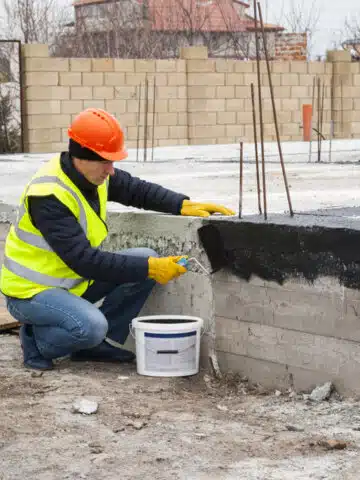Blog
What You Should Know About Exterior Basement Waterproofing
When considering the structural integrity and longevity of a commercial property, ensuring that the foundation remains dry is of utmost importance. Exterior basement waterproofing plays a pivotal role in safeguarding the building against damaging water infiltration. For stakeholders in commercial construction services, understanding the nuances of this process can mean the difference between a thriving property and costly, recurring repairs.
The Rationale Behind Exterior Waterproofing:
When it comes to the wellbeing of a commercial property, water damage isn’t just a fleeting concern; its a formidable adversary that threatens the buildings longevity and functionality. Every structure, over time, faces the relentless forces of nature. Rain, melting snow, and even groundwater can exert consistent pressure on a building’s foundation. The dangers are twofold: Not only does consistent moisture exposure degrade the material integrity of the foundation, but it also paves the way for mold growth, which can pose significant health hazards.
Exterior basement waterproofing stands as the building’s first line of defense against these perils. Unlike interior solutions, which mainly deal with water after it infiltrates, the exterior strategy aims to prevent water from reaching the foundation walls in the first place. Think of it as equipping your property with a protective shield. Especially for large commercial properties, where the stakes and potential repair costs are exponentially higher, this proactive approach not only prevents foundational decay but also becomes an economically sensible choice in the long run.
Key Components of the Waterproofing System:
The comprehensive nature of exterior waterproofing lies in its multifaceted approach. Its not just about slapping on a barrier and hoping for the best. Instead, the method is a synergistic combination of materials and strategies meticulously designed to keep moisture at bay. At the heart of this system is the waterproofing membrane, a robust material meticulously applied to the foundation’s exterior. Its primary function is to repel water, ensuring that the foundation remains untouched by moisture.
But the membrane isn’t working alone. Given that water has a natural tendency to flow and accumulate, drainage systems become an indispensable component of the process. These systems, typically comprising French drains or similar solutions, are expertly designed to redirect water away from the foundation, ensuring no stagnant pools that could exert hydrostatic pressure on the structure. Together, the membrane and drainage solutions form a formidable defense. When applied with precision and expertise, especially with professional commercial construction services, they ensure that the foundation remains protected and dry, regardless of the weather or groundwater conditions.
Advantages Over Interior Methods
While both interior and exterior waterproofing methods serve the essential purpose of keeping basements dry, the exterior method offers several distinct advantages. Primarily, it addresses water issues directly at the source, preventing it from ever making contact with the foundation walls. This approach is not just about water management but total exclusion. It can also help in preserving the aesthetic appeal of the interior spaces, as there’s no need to make modifications or installations inside.
Factors to Consider Before Implementation
Like any significant project, a few considerations should be made before commencing with exterior waterproofing. First, property owners must think about the landscape and how it might be affected during the waterproofing process. Excavation is usually required, which could disrupt gardens or other exterior features. Additionally, while exterior waterproofing is highly effective, it tends to be more costly than interior methods due to the extensive work involved. Budgetary constraints and long term investment plans should be assessed.
Maintenance and Longevity
After the initial implementation of the exterior waterproofing system, maintenance becomes crucial to ensure its longevity. Regular inspections should be conducted to ensure that the drainage systems remain unclogged and effective. The waterproofing membrane, though durable, should also be checked for potential damage or wear. Engaging with professionals in commercial construction services can provide the expertise needed for these periodic evaluations, ensuring that the system remains in topnotch condition for years.
Making the Decision: Is Exterior Waterproofing Right For You?
Choosing between different waterproofing methods or deciding whether to invest in one isn’t always straightforward. Property owners must weigh the initial investment against potential long term savings, the scale of the water issue, and the desired level of protection. Given the crucial role foundations play in the overall stability and value of a commercial property, opting for exterior basement waterproofing can be a wise, forward thinking decision.
By ensuring that commercial properties remain safe from the damaging effects of water infiltration, stakeholders can safeguard their investments and ensure longevity. Exterior basement waterproofing, while an investment, serves as a proactive measure against potential structural and health risks, proving its weight in gold in the long run.





